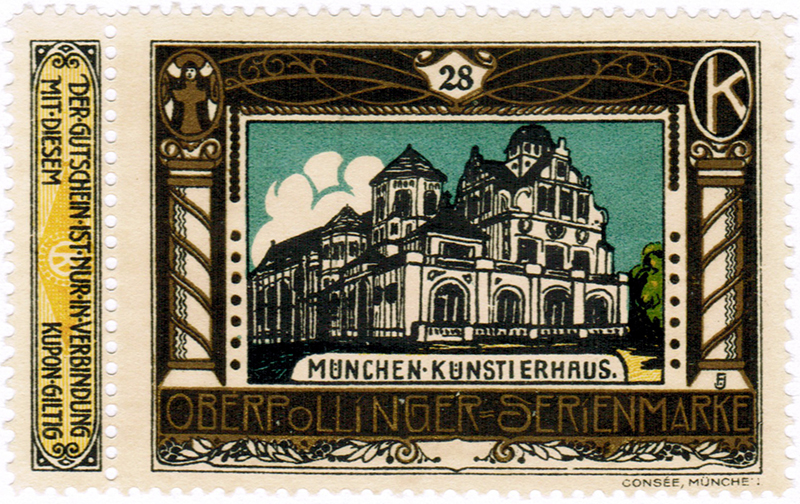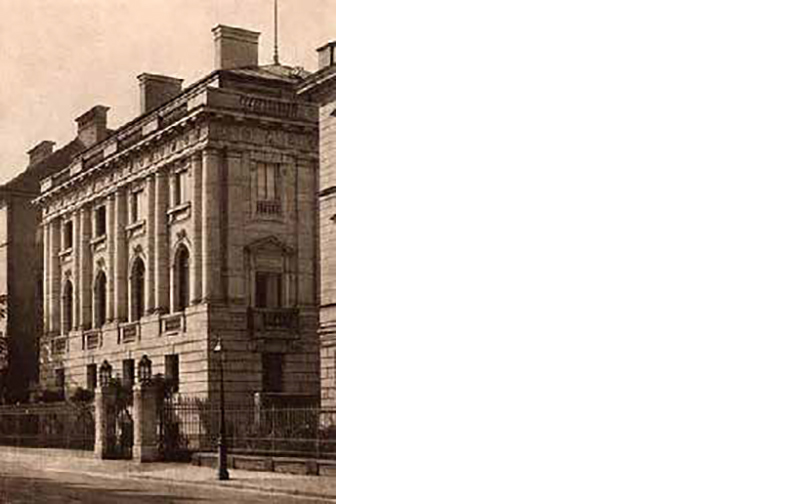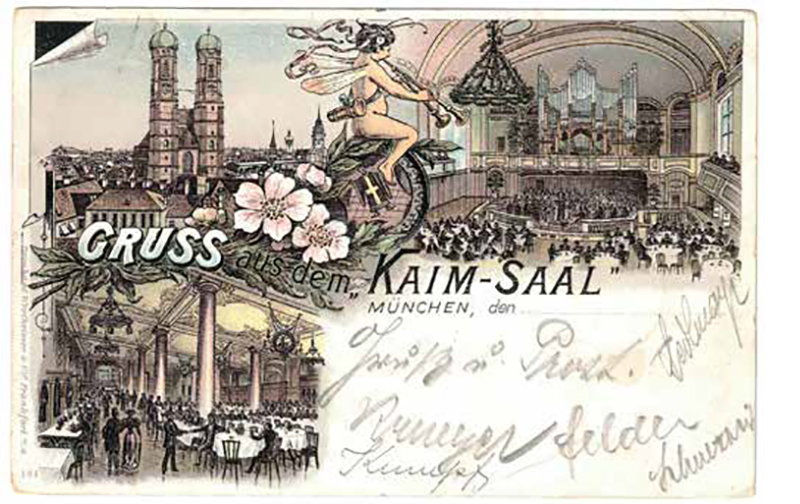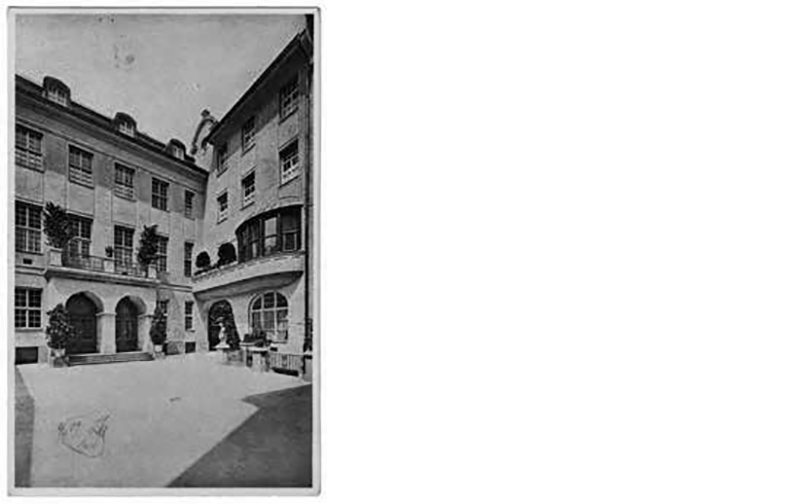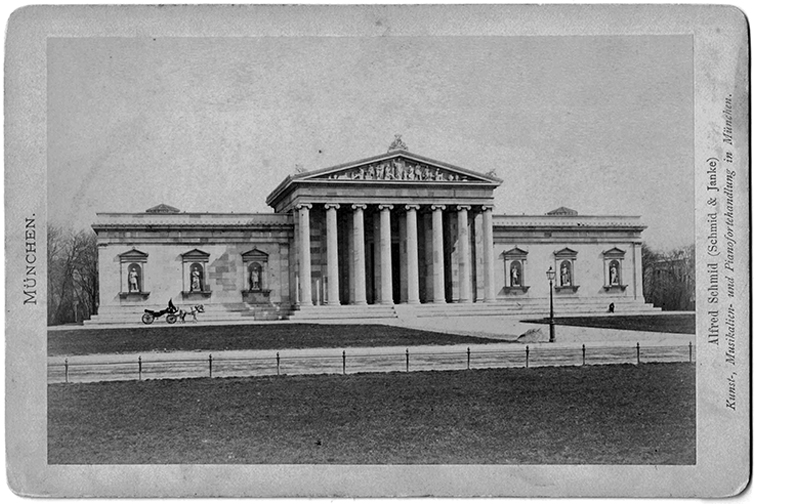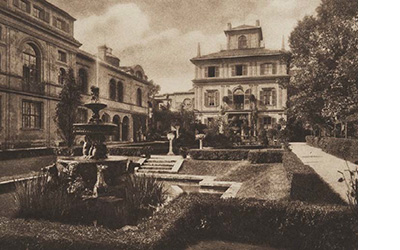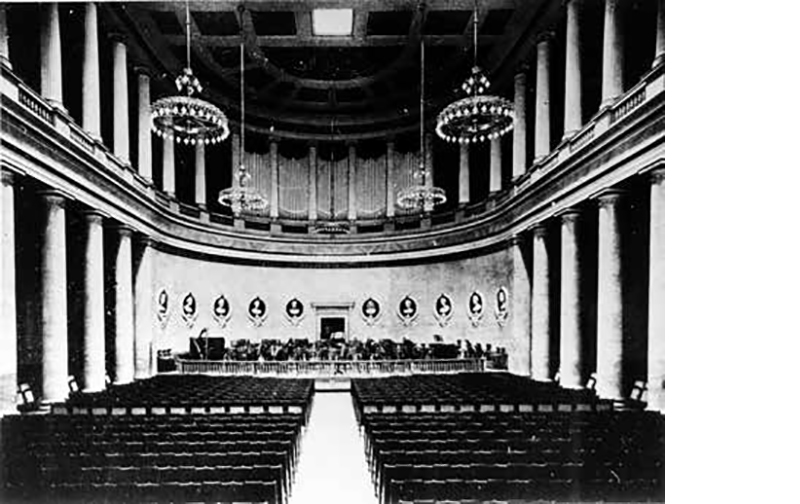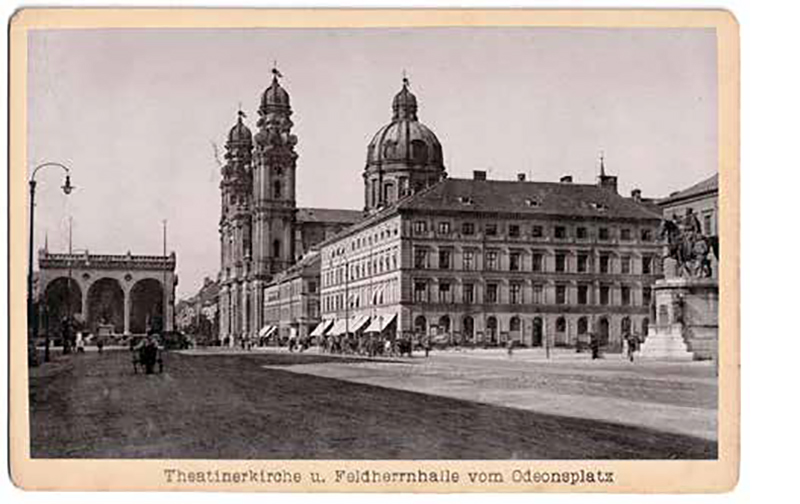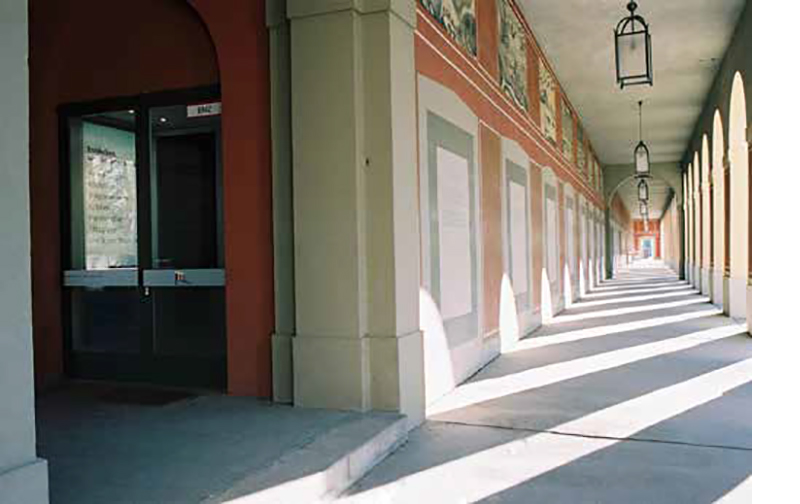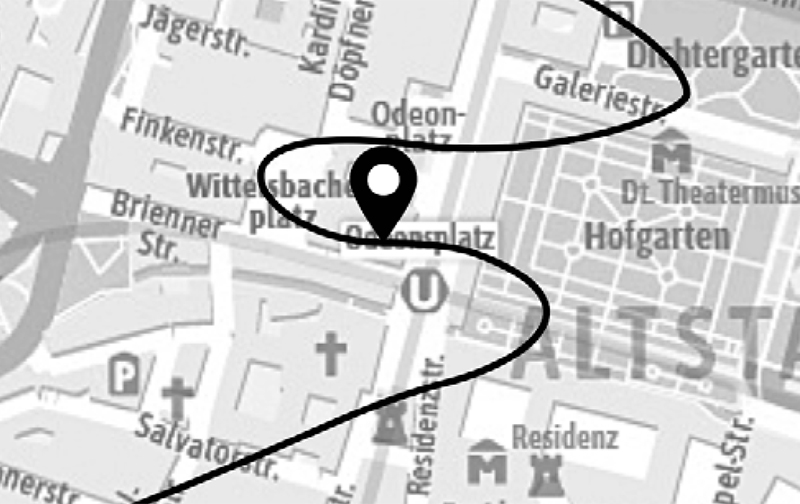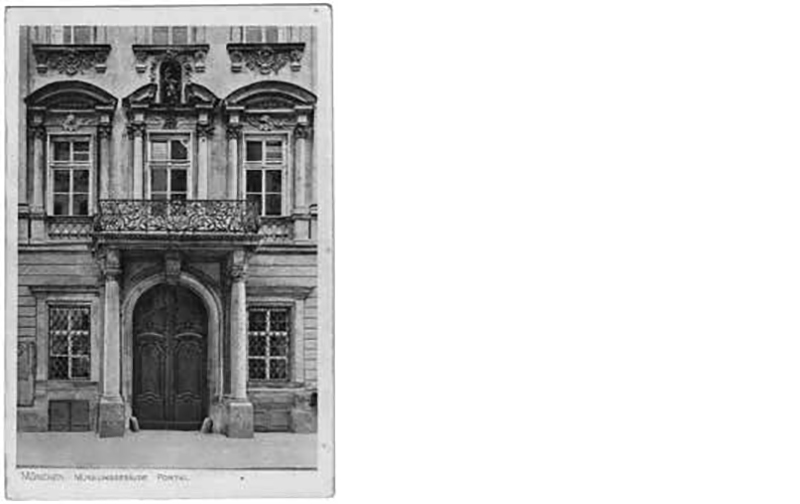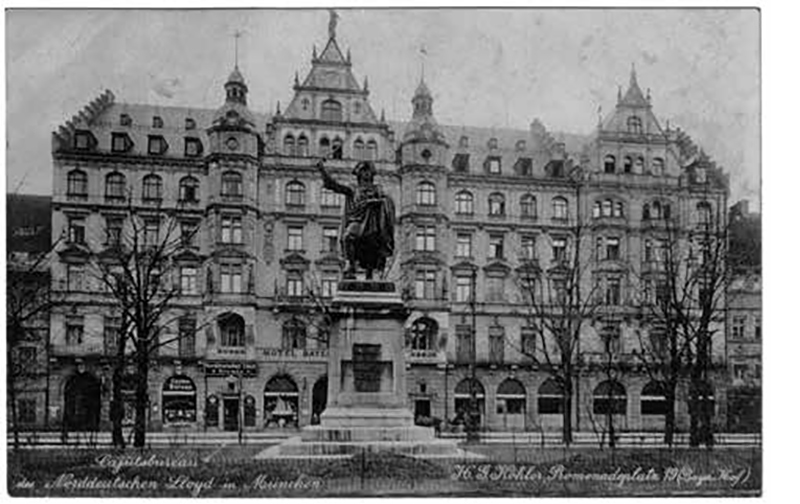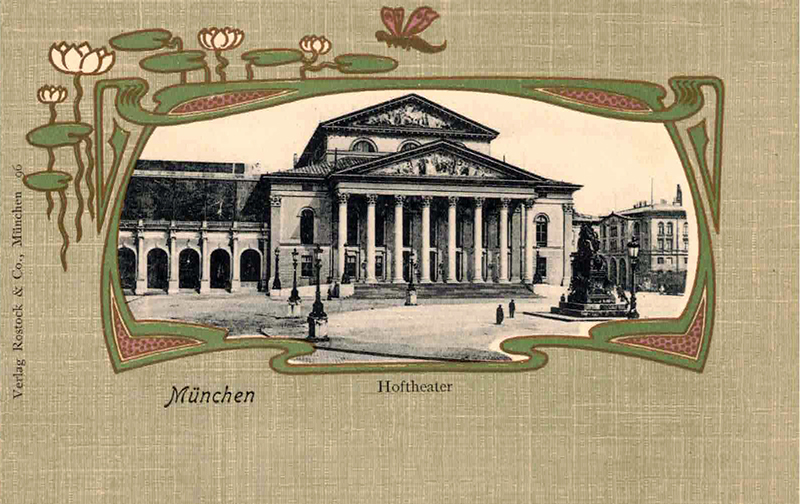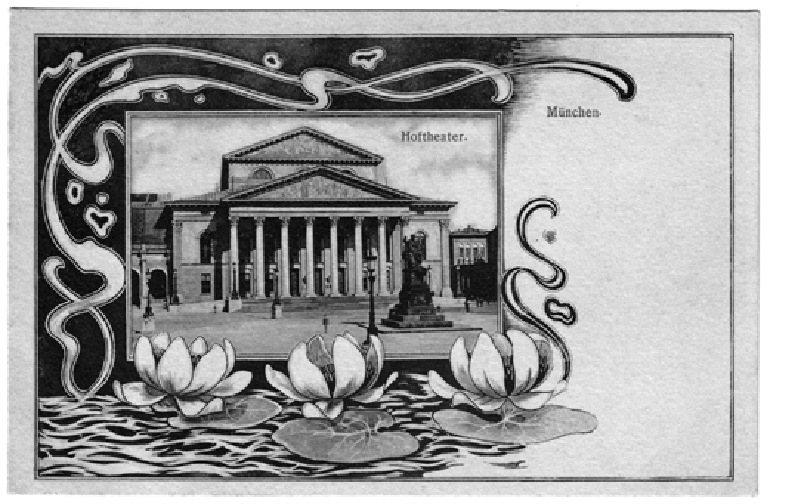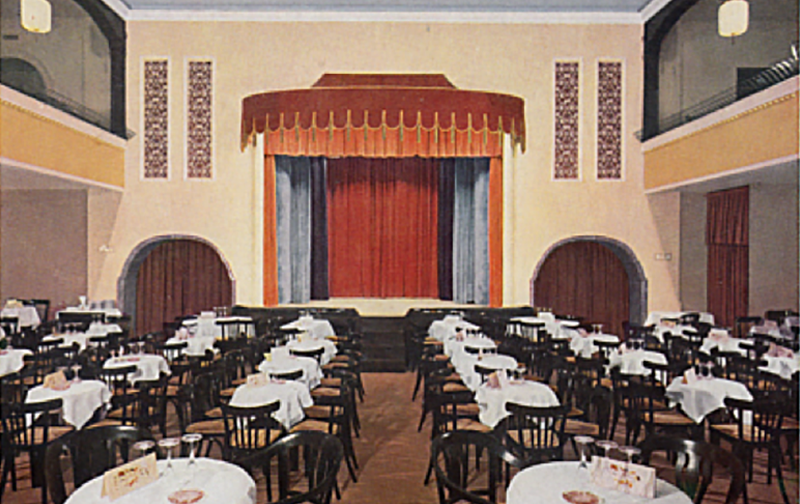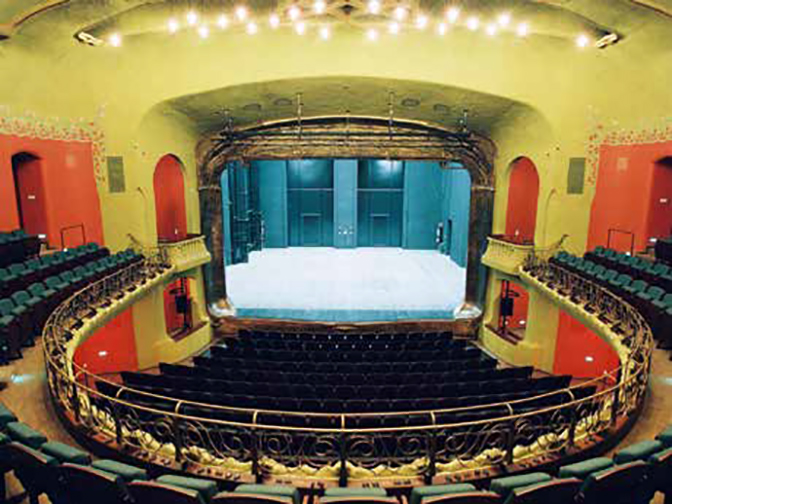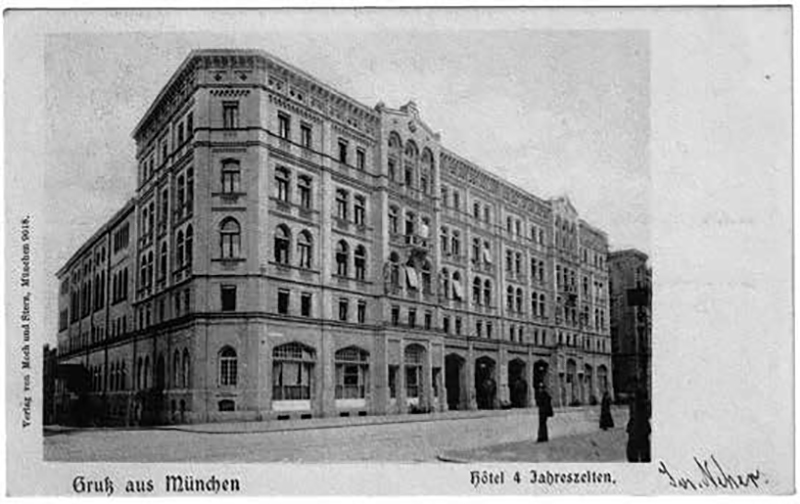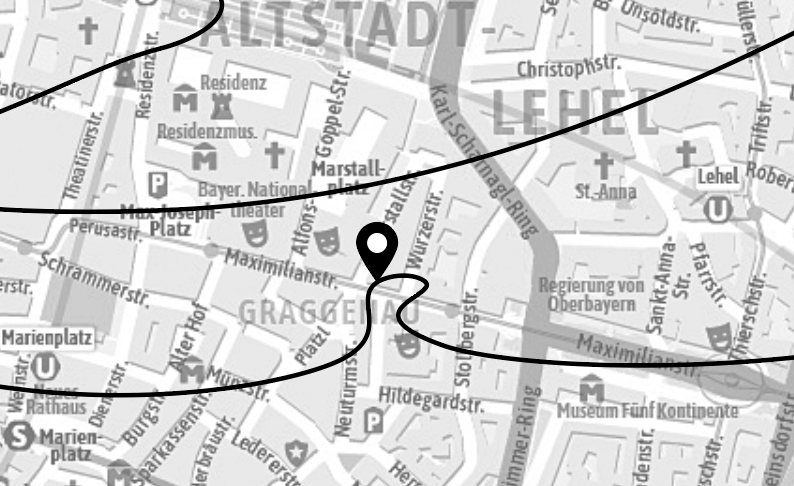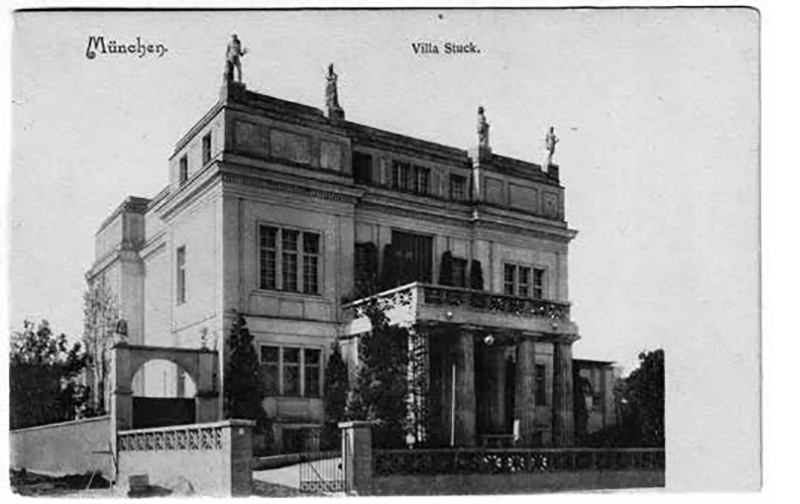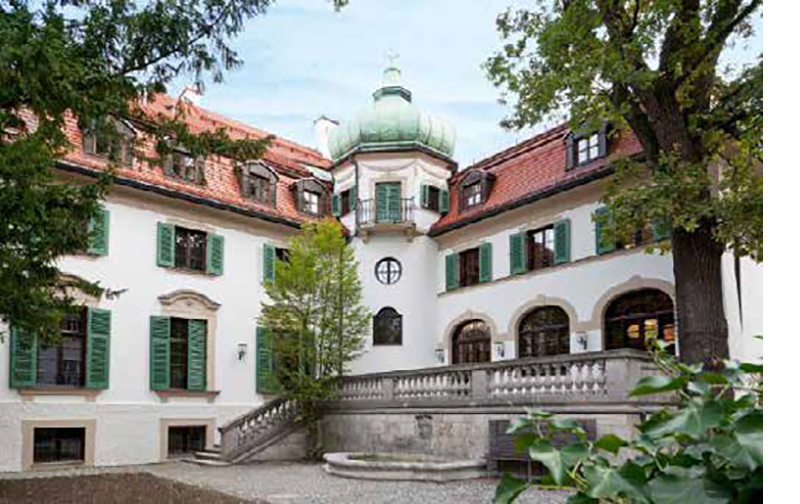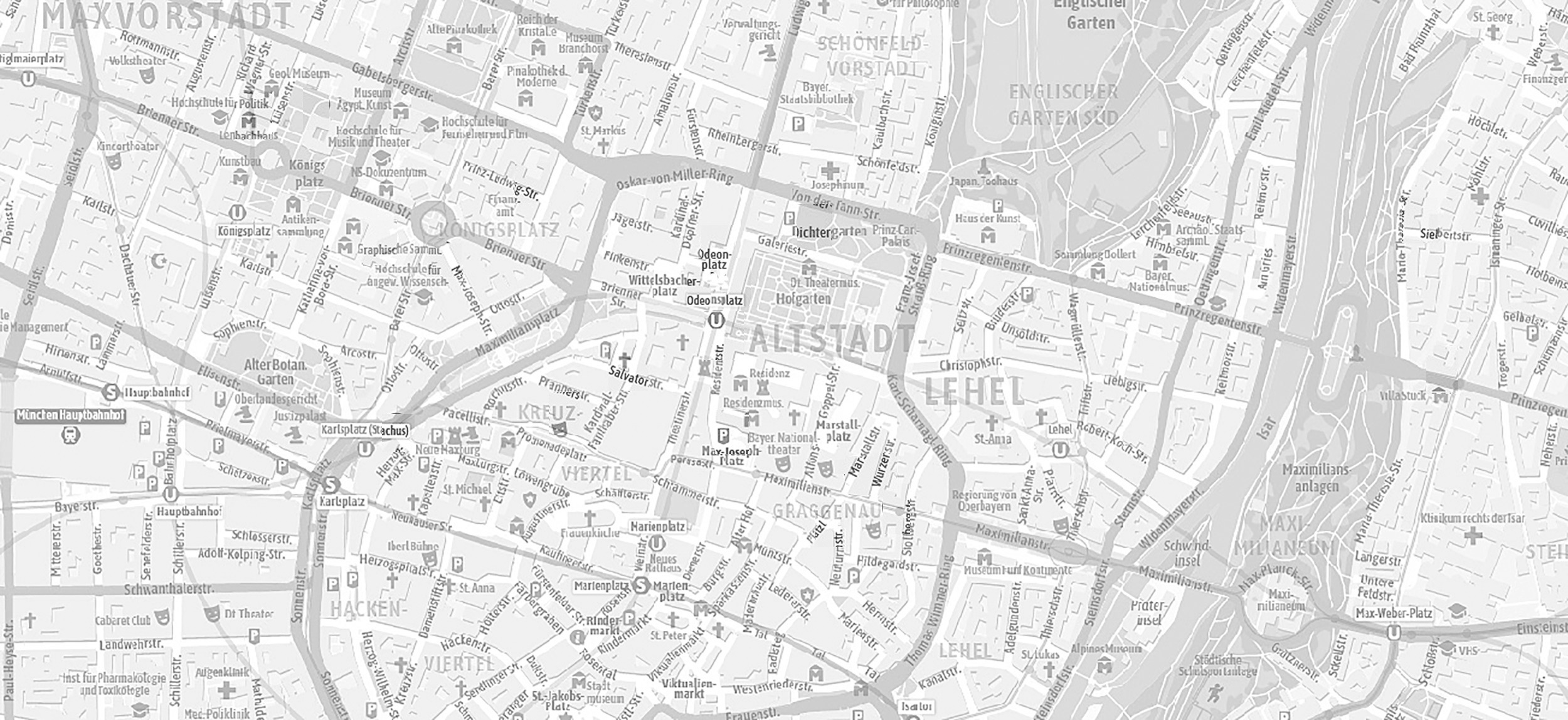








































Dance History Tour
“Munich was luminous”, wrote Thomas Mann in his novella Gladius Dei, which was published in 1902/1903. That Munich was “aglow” is well known, but that Munich was also dancing is much less well known: the city of art and beer was also an important birthplace of the new art form of “free” dance.
Before her debut in Germany at Münchner Künstlerhaus, Isadora Duncan visited Franz von Stuck in his villa to audition for him. Stuck, in turn, photographed his daughter as a skirt dancer and created reliefs of veil dancers à la Loïe Fuller. Protagonists such as Sent M’ahesa, Clotilde von Derp, Alexander Sacharoff, Rudolf von Laban and Mary Wigman debuted in Munich and comprised the first independent dance scene prior to the First World War. Fundamental publications on the new genre of “modern dance” were published here. Hans Brandenburg, the chronicler of the new art, lived and worked in Munich.
The “DANCE History Tour”, which was offered at the DANCE Festival 2019 and 2021, now guides you by bike to important sites of these newly discovered Munich dance histories. Academicians and dance makers communicate dance-historical and cultural contexts in live dialogues; documents and re-enactments are also presented. Here you will find an overview of the stages along the “DANCE History Tour”.
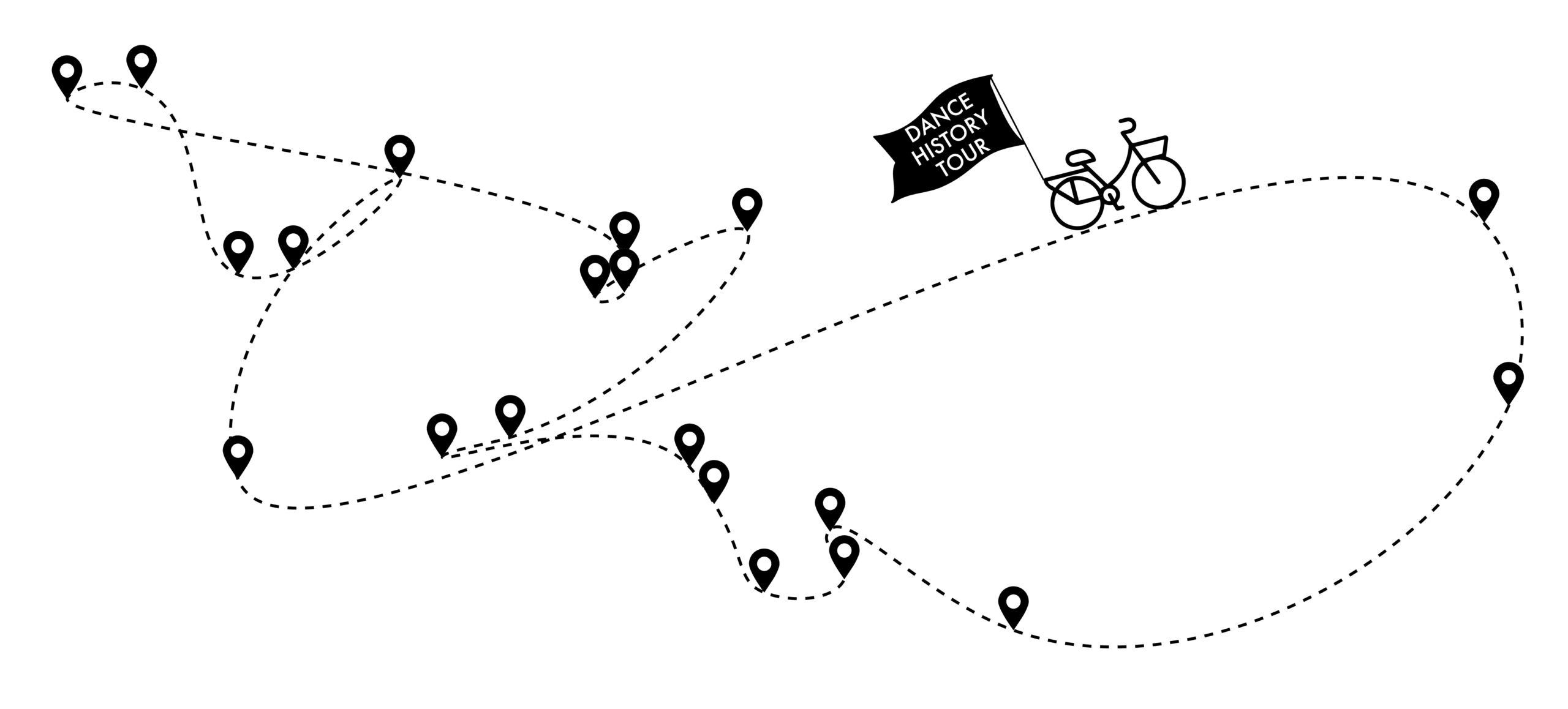
What is the Dance History Tour?
Where does it lead?
And why do the participants ride bicycles?
Brygida Ochaim
Thomas Betz
1 KÜNSTLERHAUS
LENBACHPLATZ 1
(UNTIL 1905: BACHSTRASSE)
Isadora Duncan gave her first guest performance in Germany in 1902 in the Künstlerhaus, the opulent clubhouse of the Munich Artists’ Cooperative, which was built in 1901. Duncan’s performance marked the beginning of the development of modern dance in Germany. The Munich dancers Rita Sacchetto and Sent M’ahesa likewise debuted at the Künstlerhaus in 1905 and 1909, respectively.
2 Palais Schrenck-Notzing
MAX-JOSEPH-STRASSE 9
(FORMERLY: NO. 3)
Built in 1904-1906, the Palais Schrenck-Notzing also housed the medical offices of the physician and parapsychologist Albert Freiherr von Schrenck-Notzing. In 1904, he invited the Parisian “sleep dancer” Magdeleine Guipet (Madeleine G.) to come to Munich, where he organised her sensational performances at the Neues Schauspielhaus.
3 Kaim-Saal / Tonhalle
TÜRKENSTRASSE 5
AT THE CORNER OF PRINZ-LUDWIG-STRASSE
Commissioned by the concert promoter Franz Kaim, the concert hall was renamed Tonhalle in 1905. Alexander Sacharoff (who also performed as a duo with Clotilde von Derp), Gertrud Leistikow, and other dancers performed in the building’s various halls. Rudolf Steiner presented the world’s first demonstration of eurythmy here in 1913. The sisters Margaret Delius-Rice and Ethel Rice taught “gymnastics and dance courses” in the Kleiner Kaim-Saal. Clotilde von Derp was one of their students.
4 Unionssaal
BARER STRASSE 7
The Hotel Union, built in 1907/08, was owned by the Catholic Casino. In the rear building was the spacious Unionssaal, which had a theatre stage furnished with modern technical equipment. The 17-year-old Munich dancer Clotilde von Derp, the first representative of expressive dance in the “style of a new era”, debuted here in April 1910 and continued to perform frequently at this venue until 1912.
5 Glyptothek
KÖNIGSPLATZ 3
Leo von Klenze, King Ludwig I’s private architect, designed the Glyptothek on Königsplatz in 1826-1830. It was Munich’s first public art collection and the world’s only museum devoted exclusively to ancient sculpture. But “Athens by the Isar” was not the only place where Greek antiquity served as an educational ideal. Isadora Duncan was specifically inspired by ancient sculptures and vase paintings for her “Dance of the Future”. She visited the Glyptothek during her stay in Munich in 1902, as did the dancer Ruth St. Denis in 1908.
6 Lenbachhaus
LUISENSTRASSE 33
The “Munich prince of artists” Franz von Lenbach, who was also immensely successful as a portrait painter, had a studio building and a prestigious villa built for him by Gabriel von Seidl in 1887-1890 directly on the Brienner Straße boulevard and Königsplatz. He invited the cancan dancer Saharet to pose for a painted portrait in 1899. One focus of the Städtische Galerie im Lenbachhaus is dedicated to the circle of the “Blaue Reiter” artists’ group, which also included the dancer Alexander Sacharoff.
Sabrina und Alexandra im Lenbachhaus | © Munich Dance Histories
7 Odeon
ODEONSPLATZ 3,
ON LUDWIGSTRASSE
Opened in 1828, the Odeon was built by the architect Leo von Klenze. Used as a concert hall and ballroom, it housed the conservatory of music until it was destroyed by bombs in 1944. After its reconstruction in 1954, the row of columns from the former concert hall on the first floor has adorned the inner courtyard of the Bavarian Ministry of the Interior. Alexander Sacharoff, the first male protagonist of modern dance, performed for the public in the Odeon in June 1910.
8 Kunst-Salon Littauer
ODEONSPLATZ 2
With its eleven display windows, the Kunst-Salon Littauer on Odeonsplatz presented art, reproductions, and works of fine craftsmanship. The designer Hermann Obrist inaugurated the Art Nouveau style in Munich with his abstract embroideries here in 1896. In addition to art books and bibliophile art, photographs were also sold, especially portraits of the royal family and court actors or guest stars dressed in the costumes of their theatrical roles. The young poet Hans Brandenburg bought the photo series of the Wiesenthal sisters here in 1908 and thus began his career as a dance publicist.
9 Deutsches Theatermuseum
GALERIESTRASSE 4A / HOFGARTEN ARCADES
In 1909, the famous Munich actress Clara Ziegler donated her villa in the English Garden, her fortune and her own collection to establish a theatre museum, which opened in 1910. The Clara Ziegler Foundation relocated into the gallery wing at the Hofgarten in 1953. The important collection of the Deutsches Theatermuseum also includes well over four million theatre photographs, including the archive of Hanns Holdt, who photographed nearly all the performers of modern dance in Munich from 1912 onwards.
Sabrina and Alexandra in the “Deutschen Theatermuseum” | © Munich Dance Histories
10 Vereinigte Werkstätten für Kunst im Handwerk
ODEONSPLATZ 1, ENTRANCE ON BRIENNERSTRASSE
The Vereinigte Werkstätten für Kunst im Handwerk was Munich’s most advanced design company. It had a showroom on the corner of Brienner Strasse and Odeonsplatz, which displayed so-called “reform” dance dresses that had been specially made for Clotilde von Derp’s “free dance” prior to her debut in 1910. These dresses were short-sleeved or sleeveless, with skirts only knee-length or falling loosely to the feet for maximum freedom of movement.
11 Palais Portia / Museum
KARDINAL-FAULHABER-STR. 12
(FORMERLY PROMENADESTRASSE)
Interessant ist das Barockpalais durch seine Baugeschichte (seit 1693) und ebenso durch seine Besitzer:innen und Bewohner:innen. Das Haus wurde 1944 durch Bomben zerstört; nur die von François de Cuvillies umgestaltete Rokokofassade (1737) blieb erhalten.The Baroque palace is interesting because of its architectural history (which dates from 1693) and also because of its owners and residents. The edifice was destroyed by bombs in 1944; only the rococo façade, designed by François de Cuvillies (1737), survived the bombardment. In 1819/20, Leo von Klenze built one small and one large hall for the literary-musical society “Museum”: these were Munich’s first public concert halls. The palace, named “Museum” in the 19th century, was also one of the birthplaces of modern dance. Rudolf von Laban held demonstration evenings featuring dancers from his school here in 1914. On this occasion, Mary Wigman had her first public appearance as a dancer and choreographer here.
12 Hotel Bayerischer Hof
PROMENADEPLATZ 2–6
(FORMERLY no. 19)
Built in 1841 at the request of King Ludwig I by the industrialist Joseph Anton von Maffei and according to plans drawn by Friedrich von Gärtner, the Hotel Bayerischer Hof is Munich’s oldest luxury hotel. State guests and celebrities have stayed here, including Isadora Duncan, who regularly visited the hotel since 1902. Students often stood for hours under her hotel window, singing incessantly until she showed herself and threw them flowers or handkerchiefs – similar to Michael Jackson decades later.
13 Residenztheater
MAX-JOSEPH-PLATZ 1
On the site of today’s Neues Residenztheater (1951) on Max Joseph Platz, the Elector had his court architect François de Cuvilliés build an opera house from 1751-1753, which was destroyed by bombs in 1944. In 1896, it was the first theatre to be equipped with a revolving stage. The Japanese dancer Sada Yacco and her ensemble gave a guest performance here in 1902. Clotilde von Derp danced the roles of the kitchen boy and the journeyman tailor in Richard Strauss’ ballet comedy “Der Bürger als Edelmann” in 1913.
14 Nationaltheater
MAX-JOSEPH-PLATZ 2
Alongside the old Residenztheater, which seated only 560 spectators, construction of the new Royal Court and the National Theatre began in 1811. After suffering two fires, Leo von Klenze’s classicist building was finally completed in1825. Flora Jungmann worked here as a dancer and ballet mistress from 1884 to 1917. In 1901, she dared an experiment: the dance play “Pan im Busch” by Otto Julius Bierbaum. The ballet master and choreographer Heinrich Kröller, a ballet reformer who later worked in Munich from 1917 to 1930, had studied with Jungmann at the Munich Ballet School.
15 Bonbonniere
NEUTURMSTRASSE 5
The elegant and fashionably furnished cabaret theatre was located at Neuturmstrasse 5 at the Kosttor. The theatre was co-founded in 1910 by the theatre director Emil Meßthaler (1869-1927), who was a friend and patron of Frank Wedekind, and by the actress and chanteuse Gussy Holl (1888-1966). They gave up the theatre just one year later and sold it to the restaurateur Hans Gruß, who made it into one of Munich’s best-known artists’ cabarets. Joachim von Seewitz and Valeska Gert celebrated their first successes here with their dance performances. The painter and illustrator Walter Schnackenberg created several posters.
Sabrina Kanthak and Alexandra Schildhauer in the Bonbonniere | © Munich Dance Histories
16 Schauspielhaus / Kammerspiele
MAXIMILIANSTR. 26–28
Max Littmann built the Neues Schauspielhaus in 1901 at the rear and in the garden of a double-tenanted house on Maximilianstraße that Friedrich Bürklein had built in 1869-1871. The designer Richard Riemerschmid furnished the Schauspielhaus in Art Nouveau style. Dedicated to modern drama, the theatre also served as the venue for sensational guest performances in the dance genre. The Münchner Psychologische Gesellschaft presented the “dream dancer” Magdeleine G. in 1904 curated and directed by Schrenck-Notzing. This was followed in 1907 by an officially forbidden performance starring the Canadian-American dancer Maud Allan, whose piece “The Vision of Salome” could be shown only privately (i.e. not to the general public). The Münchner Kammerspiele moved into the building in 1926.
Sabrina Kanthak and Alexandra Schildhauer lead a tour through the Kammerspiele | © Munich Dance Histories
17 Hotel Vier Jahreszeiten
MAXIMILIANSTRASSE 17
(FORMERLY no. 4)
Originally built as a residential house, the building was converted into a hotel in 1858. The impressive and luxurious Hotel zu den vier Jahreszeiten has numbered among the best hotels in Munich and Germany ever since. Mary Wigman started her first tour of Germany here in September 1919.
18 LABAN’S FLAT
MAXIMILIANSTRASSE 46
(FORMERLY no. 24)
Stylistically uniform Maximilianstraße, today Munich’s luxury mile, was built by Friedrich Bürklein in 1854-1864. Rudolf von Laban, the pioneer of modern dance in theory and practice, lived with his family in a fourth-floor flat at Maximilianstraße 24 (today: house number 46).
19 Villa Stuck
PRINZREGENTENSTRASSE 60
(FORMERLY: ÄUSSERE PRINZREGENTENSTR. 4)
On the high (eastern) bank of the Isar River, Franz von Stuck created his artist villa in 1897/1898 as a Gesamtkunstwerk, designed down to the last detail in “modern” style and with a mix of ancient and symbolist aesthetics. Isadora Duncan explained and demonstrated her dance art in Stuck’s studio here in 1902 before she was allowed to perform in the Münchner Künstlerhaus. As a visual artist, Stuck celebrated the vitality of dance and photographed his daughter Mary Stuck as a dancer.
Sabrina Kanthak and Alexandra Schildhauer lead a tour through the Villa Stuck | © Munich Dance Histories
20 Monacensia im Hildebrandhaus
MARIA-THERESIA-STRASSE 23
The celebrated Munich architect and building contractor Gabriel von Seidl constructed the building in 1898 for the famous sculptor Adolf von Hildebrand, who drew the architectural plans for it. It has been the home of the Monacensia since 1977. An institution of the Munich City Library, the Monacensia houses a comprehensive library, a collection of diverse writings about Munich, and a literary archive with manuscripts and estates of Munich authors, including the estate of the dance publicist Hans Brandenburg.
Sabrina Kanthak and Alexandra Schildhauer lead a tour through the Monacensia | © Munich Dance Histories

